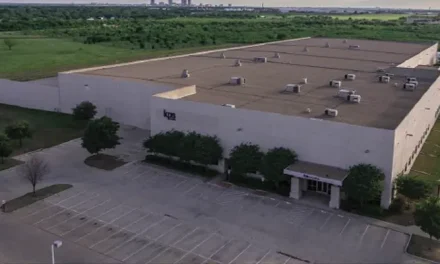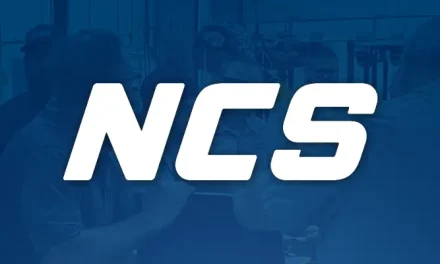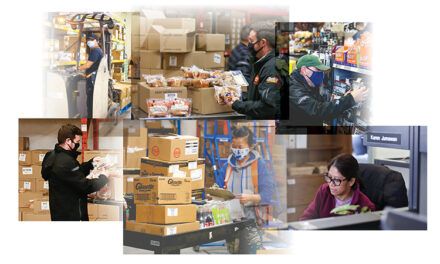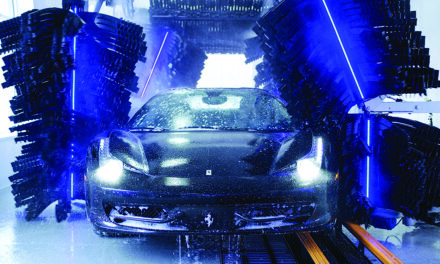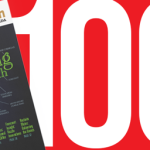
POS Continues to Evolve

POS Continues to Evolve
By Angela Altas
When it comes to point-of-sale (POS) and payment innovations, mobile seems to be increasing in popularity.
“The latest trend, from what we are seeing and that has been requested by our clients, is the need of having a mobile payment system,” says Lee Barter, senior vice president, Infonet Technology Corporation. “Our clients are seeking ways to enhance the customer experience. To this end, we developed an app for pay at the pump transactions. We are just completing the final testing of the app and are anticipating client implementation by the end of the first quarter of this year. We anticipate that this app will evolve into an in-store mobile wallet for our client’s customers, allowing for multiple methods of payment and integration into loyalty and gift card programs.”
Payments Canada, in the 2017 Canadian Payment Methods and Trends report, highlighted that cash represents 13 per cent of POS transaction value and debit cards represent 28 per cent. Credit cards are noted to dominate POS value with over $462 billion in transactions in 2016. Prepaid transactions are the fastest growing POS transaction type with a seven per cent year over year growth in value, totally approximately $20 billion.
“Mobile payment apps, mobile wallets and the fact that millennials and Generation Z and Y carry little cash,” are impacting on a lower use of cash, says Barter.
For POS equipment, there is now the ability to have solutions available on more compact equipment, such as iPad, and seven-inch android and windows tablets, and use wireless printers and scanners, notes Barter.
“Standard POS systems are now available with projected capacitive touch screens ranging from 12 inches to 27 inches,” says Barter. “These systems now have faster processors, solid state drives, Bluetooth, improved design, look and feel.”
Computers, which are the backbone of any POS system, need to be replaced every four to six years, due to hardware lifespan, OS changes, wear and tear and performance, notes Barter.
“A POS system software upgrade or change is dependent upon several factors,” says Barter. “Does the current software receive consistent updates as well as improved capabilities? If the site is re-branding, is the operator required to use a specific POS software? Is the existing software meeting the needs of the operator? Is the operator receiving the required technical support and help needed from the POS software company?”
Having the right products that your customers want is important, says Barter. Consumers have a high expectation that retailers will be able to accept any type of payment via different means.
“Some retailers will have difficulty meeting these expectations in the absence of a POS supplier and payment processing partner that can see to the consumer’s needs,” says Barter. “With the advent and ease of use of TAP as well as the wave of mobile wallet users, WeChat Pay AliPay, Apple Pay, Google Pay, etc., consumers will expect a seamless and quick payment experience. WeChat has 600 million users, AliPay has 400 million users, Apple Pay has 250 million users, and Google Pay has 100 million users.”
Self-checkout and frictionless retail will also be significant trends in the future, along with store delivery, which is already being implemented by some convenience/gas retailers in the United States, states Barter.
“Digital receipts are also trending, both for environmental reasons and to tie in to digital expense apps,” notes Barter.
Retailers need to ensure that the POS software they are using is both PCI compliant as well as PA-DSS certified, says Barter.
A POS system captures a large amount of transaction data and having the capacity and the needed analysis tools in place to handle the data, sort it and then put it into a meaningful, and timely report is important.
“Successful retailers have always analyzed sales data,” notes Barter. “Phenomenal insights are now available allowing retails to ensure they have the right products at the right price that their customers are demanding.”
Consumer adoption of mobile applications is a trend influencing payment, states Richard Carpenter, director of customer solutions, Unitec. Consumers want the convenience of mobile payment, tap-and-go credit cards, and subscription programs that allow them to pay quickly.
“Consumers want to be able to purchase products and services via the app and expect their mobile app purchases to be accepted at the pay station,” says Carpenter. “Consumers expect personal information exchanged in a transaction to be handled securely. They also expect a seamless and fast checkout experience are accommodating any payment method they choose to use. Additionally, they want multiple options. Some customers want to deal with cashiers and staff members, while others would prefer to use a kiosk to speed up the process. A great POS gives you the ability to handle both types of consumer.”
POS systems continue to evolve, says Carpenter.
The traditional world of convenience stores and gas stations has been more of a functional experience than a marketing one; focused on operations, service and merchandising more than marketing, says Dave de la Plante, strategy and program director, Bulloch Technologies.
“What is happening now, with digital and mobile, is a shift away from treating the site as a functional activity to creating an overall marketplace experience,” says de la Pointe. “Over the last five years, the marketing activity has crept in predominantly around adding loyalty programs and making for a better customer experience. A capability we are bringing together is an app and a solution architecture with the ability to tie all the various functions of the automobile experience together in one app. It is being designed and built for certain US-based retailers in the petroleum space today.”
T.J. and Jessie Sheehan, owners of Enniskillen General Store, with locations in Enniskillen and Port Perry, Ontario say that although they don’t see many customers who pay using mobile devices, they have noted that this trend is “definitely growing” in popularity.
“I would say that 60-70 per cent of people pays with debit or credit cards,” states T.J. Sheehan.
Rahim Ramal, owner of Hampton General Store in Hampton, Ontario notes that cash transactions have dropped at the store as more people are paying for items with mobile devices or debit/credit cards.
Canadians love the use of their TAP cards, and although adaption of mobile payment is catching on much slower in Canada than in the United States, Bulloch Technologies is helping to give companies the ability to do mobile payments.
“We have a strong mobile payments partner who we are currently working with so that some of the smaller chains in Canada will not have to invest in the IT infrastructure needed to drive the process because it will be done for them,” says Brad Bossert, director of sales, Bulloch Technologies. “One thing that we always try to point out is that we are a Canadian solution that has a really good foundational package offering for what we do. As marketing efforts increase, as data uses increase, as the functionality and experiences of the customer increase, we’re always keeping up with what is going on. You have to be on top of things all the time.”
Using customer transaction data to deliver a one-to-one experience for each customer has delivered an impact to many convenience stores, says Michelle Tempesta, head of marketing, Paytronix Systems.
“That cross section of data, coupled with knowing the individual buyer, has elevated how convenience stores drive traffic with targeted, highly effective offers and messages,” says Tempesta. “Now, more than ever, convenience stores have to deliver on their promise of convenience. That means having the right mix of products, at the right time, to deliver them to customers in a fast, frictionless way. Brick and mortar continue to battle for sales with eCommerce, and this continues to impact the convenience store space, especially as online ordering becomes more widely adopted.”
The adoption of Apple Wallet and Google Wallet continues to intensify, says Tempesta.
“Adding the loyalty program identification to the single tap transaction delivers an incredibly frictionless payment method,” says Tempesta. “Paytronix has rolled this solution out to all Panera Bread locations. A few other restaurant brands are adopting the technology and will soon be followed by a well-known convenience store brand.”
Cloud-based POS systems have shaken up the restaurant POS landscape, states Tempesta.
“I would imagine the convenience store POS market may experience something similar in the next five years,” she says. “Cloud-based POS systems enable third party providers to remove challenges of promotion setup and logic.”
Customers today want to enjoy a personalized experience that is fast and friction free. If your POS is holding you back from delivering a truly convenient experience, it’s time to upgrade, notes Tempesta.

